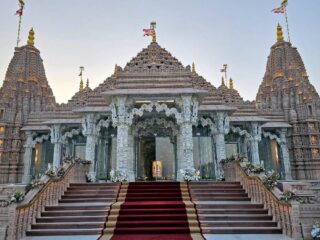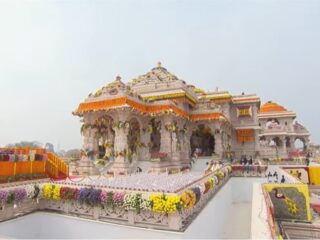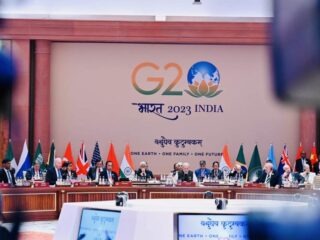Irfan Engineer
(Secular Perspective July 1-15, 2014)
India, it is said is the largest democracy in the world. India has done well, compared to its South Asian neighbours in sustaining democracy for 67 years despite its rich cultural diversity. Diversity often triggers off competing claims by various interest and religio-cultural groups on the national resources. Democratic state proved to be better suited to mediate the competing claims of various classes, castes, ethnicities, linguistic communities, indigenous communities and gender. The claimants put forth various criteria for distribution of resources – affirmative action for the needy (socially and educationally backward classes, women, etc.); affirmative action for those oppressed in the past (dalit); merit based distribution of opportunities and resources (upper-castes); contribution based claims (free market); and finally more privileges to the sons of the soil (regional parties and majoritarian communal forces).
During colonial period, feudal forces were entrenched in India. Feudalism manifested through rigid hierarchies based on gender, caste and class. Feudal traditions and culture was part of what then appeared as “natural” order which oppressed the dalits and women most, kept them from education, religion, and forced the dalits in particular and all members in general to pursue occupations based on their caste. The system extracted unpaid labour out of the oppressed. The colonial power, on account of its own compulsions, introduced certain changes from above which had an impact on the hierarchies and on feudal traditions and cultures. Industries were allowed in controlled manner in some urban areas. Labour hungry industries needed human resources, and those who could break out of caste structures in villages were welcomed by the cities as industrial labour. Though the doors of education were technically opened for the dalits and women, they still had no means to break free from the caste system and pursue education. Very few could and did. The aspirant middle class youth travelled to England to pursue higher education and appear for ICS exams and came in contact with secular philosophies and liberal ideas of liberty, equality and fraternity. The educated class then mobilized the colonized people and struggled for independence.
It is in the anti-colonial struggle that idea of India as a secular nation emerged. The colonial state often projected itself as protector of the interests of the Depressed Class Indians and the Muslim minority. To resist the colonial power, Indians of all caste, class and regions needed to be mobilized. To mobilize the Depressed Classes and middle castes, Congress supported temple entry movements. Leaders spoke up against the practice of untouchability and agreed to reservations for the Depressed Classes of Indians. These measures were undertaken to ensure all the citizens would be equal, free, and would have the right to justice and to be treated with dignity. Gandhiji saw two impediments to free India – untouchability and the Hindu-Muslim divide. Independence to him would have little meaning if these questions were not settled. The social contract that Indians entered into in was to create a post-Independence state that would not discriminate on the basis of caste, religion, race, gender, descent, place of birth or residence, except for the welfare of women and children, reservations for the Scheduled Caste and Tribes and special provisions for the advancement of the socially and educationally backward classes.
India has one of the best democratic Constitution guaranteeing liberties to its citizens (with reasonable restrictions), equality of status, social justice to the socially and educationally backwards and reservations for the SC & STs and dignity to all. However, socially the feudal culture, customs, traditions and social structure and institution of caste (endogamy, caste controlled religious and educational institutions and caste based networks in all fields) has survived and pips the Constitutional values. The social and political elite of all castes and diverse religion, ethnic, linguistic and indigenous communities zealously guard their customs, traditions, identities. They use various identity markers to draw the boundaries of their social groups and compete for privileges and share in national resources. The liberals within the communities resist the rigid boundaries and imposition of feudal traditions, customs and religio-cultural identity markers that homogenize the communities. They want change, they want to discover new meanings of sacred symbols or even transcend them. They want diversity. It is the liberals or the reformists within the communities that want democratic state and a Constitution that guarantees liberties to all the citizens based on equality.
The Hindu Nationalist Organizations (HNOs), the elite of Muslim community and other communities need a state not to uphold Constitutional liberties, equality, dignity of all human beings and social justice, but to uphold their feudal privileges, hierarchies and their sectarian understanding of religion, traditions, customs and culture. The elite, even though a tiny tiny fraction of the community they claim to represent, are resource rich, well networked with state and control the institutions of the community, including the educational institutions, places of worship and the offerings thereto, community halls and social capital, claims to authority over scriptures, priestly establishment, theology and even God. These are handy as tools to demarcate communities and control the majority and make them fall in line. The liberals want liberties and citizenship rights of equality, dignity of individuals, and justice. Even though numerically larger, but without any resources that the elite have recourse to, the liberals are unable to exercise as much influence as the elite can. However, under the Constitution, it was the duty of the democratic state to stand up for the rights of the liberals resisting imposition of communitarian identities by the elite.
Economy
Emerging from feudal backwardness and colonial past, India inherited predominantly labour intensive agricultural economy that underfed feed over 40% of its population, particularly the agricultural labourers and marginal farmers – not because it did not produce enough, but because the feudal lords could appropriate the surplus. The challenge before the newly independent country was to grow from low industrial base to an industrialized country. Lower rate of domestic savings and capital formation made it difficult for private investment in heavy industries like steel, mining, machine tools, telecommunications, insurance, and power plants. These industries were developed in public sector.
1990s reversed these trends under the influence of structural readjustment loan from the IMF bowing to their conditions. Indian economy was liberalized and the profitable Navratna public sector companies were privatized following dubious process to the benefit of politically well connected industrial houses. The LPG (Liberalization, Privatization, and Globalization) brought in speculative foreign investments. FDIs with deep pockets eyed on the natural resources of the country – land, water, mineral wealth and fossil fuel. Lax environment protection regime together with cheap labour and poor implementation of labour laws attracted FDIs. Mantra of FDI was job creation, eyes were on high rates of returns on their investment and the tool to avail of natural resources and lax implementation of labour and environmental protection laws was corruption. The state played along willingly and displaced the farmers, dalits, adivasis, fisher folk, and other marginalized communities from their land and livelihood, and transferred land to industries at dearth cheap rate to large corporate houses.
India’s economy grew at a high rate of 8-9% since 1990s through the first decade of 21st Century. However, the high growth rates clocked in benefited elite industrial houses and the foreign investors. Middle class grew in size benefiting from the IT industry and BPOs. With this exception, by and large the growth has been jobless and futureless growth. The size of organized working class shrunk as jobs were transferred from organized to unorganized contract workers, informal sectors and dispersed production sites wherever possible. The distribution of benefits of high growth rate was grossly unequal. The farmers in Maharashtra, Gujarat, Andhra Pradesh and handloom weavers of Andhra Pradesh were committing suicides as they were unable to pay their debts. According to Arjun Sengupta Report, 80 per cent of Indians earned less than two dollars a day. The percentage of persons below the Poverty Line in 2011-12 was 25.7% in rural areas, 13.7% in urban areas and 21.9% for the country as a whole. However the poverty line was placed at expenditure of Rs. 32 per day per capita in urban areas and Rs. 26 in rural areas. While a section of marginal farmers, dalits, adivasis landless labourers and unorganized workers faced inflation and erosion of their real earnings, the corporate houses and foreign investors earned high returns on cheap raw materials, labour and common resources of the rural communities.
The growing inequalities had far reaching impact on the society. As the state withdrew from agriculture sector, energy, medical, educational and other subsidies to bring down its fiscal deficit, the communal elite which stepped in with its caring programme strengthened while the liberals within the communities further weakened.
The Challenges
Democratic governance and rule of law in India is facing its biggest challenge yet from the communal elite and the crony capitalism of the corporate sector. These are two mountains casting their shadow on democracy and liberal values in India.
The communal elite desire to return to their respective golden ages with feudal values, traditions and customs that restore privileges based on birth, and hierarchies of caste and gender. They want modern consumerism and luxurious lives along with tightly knit community where in individuals are bonded and have set of defined and enforceable duties and privileges based on birth. Sacred symbols and doctrines are invoked and pitted against democratic liberties, including freedom of expression. Strict censorship regime is demanded. The elite plant themselves on the top of privilege pyramid and play unquestionable supremos, indeed God – accountable to none. They continuously try to expand their demagogic power, privileges and the territories of their community, abridging the political rights of their followers in exchange of illusionary security and notional superiority over “other communities”. They promise pleasure in another world or better status on rebirth.
Constitutional and legal rights are debunked along with the institution of Parliament. Faith is invoked to be supreme and over and above the Constitution and institutions of democracy. The communal elite claiming to represent Muslims say their Shar’ia (Muslim Personal Law) is immutable and they will brook no interference. They deliberately ignore that human mind has always mediated, understood and interpreted the divine words. They have demanded ban on number of books, including Satanic Verses written by Salman Rushdie, Lajja written by Taslima Nasreen. The HNOs have demanded that in accordance with the faith of the Hindus that Ram was born on a particular spot in Ayodhya, a Ram Temple be constructed where Babri Masjid once stood and was demolished illegally. They too have their list of books, films and other artistic expressions that should be banned. Postings on social media are a regular source of provocation for communal elite that justifies their coming on streets and indulge in all sorts of mischief and vandalism. The communal elite want a state that is illiberal, control thought process and thereby restrain advance of frontiers of knowledge, culture and truth.
The Indian state and its institutions have more often than not capitulated to the communal elite as they have disproportionate influence over social space as well as the political state. The political elite is more accommodative towards the agenda of the communal elite rather than following the Constitutional mandate of ensuring liberties of citizens, dignity of individuals, equality before law and justice. This in turn ensures more shift towards ethnic, communal and caste based mobilization and deepening of identities. Rather than making identity irrelevant to governance, the state mediates and balances between different communities. Mightier walks away with greater clout and greater share.
When Nehru was heading governance, public policy cared less about the social identity of its beneficiaries and the only temples for the state, according to him, were institutions like the elite universities, hospitals, large dams, public sector for the development of the country. Nehru too was over cautious and non-confrontationist in his approach towards the feudal elite which dominated the Congress during his time. However, his policies marginalized the feudal elite, however slow the pace, by laying strong foundations for industrial growth. Till 1970s the dominant discourse of nationalism was always in terms of guarding countries’ sovereignty against external forces seeking to dominate India also referred to as imperialism. All Indians were called upon to unite against any attempt by the imperialist forces (read the first world countries led by US) and all Indians were seen as pillars and champions of Indian Nationalism – even during the three wars with Pakistan.
The feudal elite rallied behind communal elite as they were being marginalized. The HNOs had another definition of nationalism – one which was defined vis-a-vis the minorities – Muslims and Christians as internal enemies and Pakistan as the external enemy with US as a potential ally to be won over if need be. The new discourse of nationalism with enemies located within the borders of the country, is bound to exacerbate communal conflicts – with a tiny section of alienated minority youth resorting to terrorism and the fringe elements of HNOs indulging in show of their prowess through randomly targeting minority youth and then justifying it on one pretext or another. If the sate acts sternly and evenly against both menace, it will go a long way in keeping the conflict in check.
New power of Communal elite
The communal elite have acquired new clout in recent times. Since about a decade and a half, or more, selected religious festivals are being exploited by the communal elite for political objectives with all kinds of perversities and distortions. The public observance of these festivals is more to demonstrate the power of the organizers and often involves anti-social elements. Religion is used as cover and a pretext for coercive collection of donations. These festivities are often backed by companies to market their brands, including cigarettes and alcohols. Politicians are getting involved in a big way as they cultivate their vote banks. The business-communal elite-politician nexus has strengthened the communal elite.
In the recent election for 16th Lok Sabha, the BJP was seen spending huge amounts on advertising and marketing their message, organizing over 400 rallies and criss-crossing the country for the rallies. The estimates of expenditure for the election campaign by the BJP ranges between Rs. 3,000 crores and 10,000 crores. However, the party itself has not come out with facts publicly. It is suspected that this unprecedentedly large amount was collected from the corporate houses. Shri Narendra Modi himself was proposed as PM candidate by the richest business houses in India months ago. Why should business houses propose a PM candidate?
Communal elite, as mentioned above, have little respect for democracy and rule of law. Democracy gives space to the workers, and other marginalised sections of the society, to organise and defend their rights and interests. In Orissa, Maharashtra, W. Bengal, TN and other states, the marginalized sections resisted the attempt by the MNCs and Indian business to acquire their land and other common resources. Capital is attracted to places where regulations and taxes are minimal and project clearance rapid and stability with a strong state that can suppress agitations with iron hand. The communal elite are able to deliver minimal norms and always stood for strong authoritarian state to enforce privileges of the communal elite. Alliance of communal elite and crony capitalism poses biggest challenge to the country.
With the rightward shift in the polity, people of India have elected a self proclaimed Hindu Nationalist as the PM of the country in the hope of development and jobs. Will their hopes be fulfilled? Will the development model proposed by the communal elite and crony capitalism benefit the common Indians or will this pose real danger to liberals and democracy remains to be seen.




